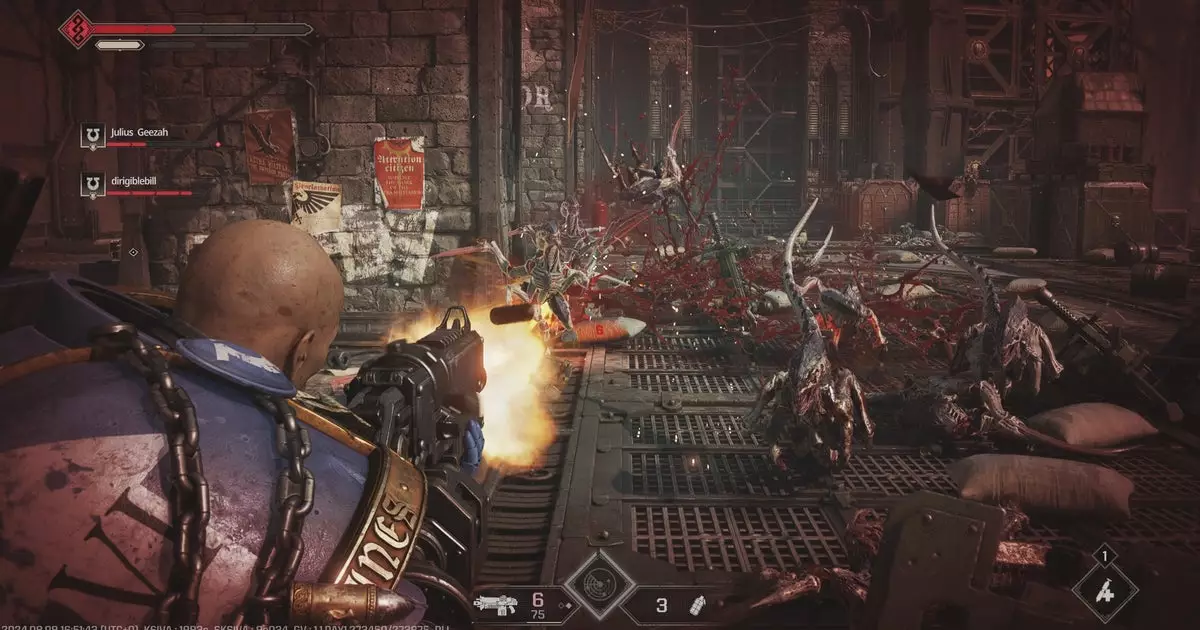In the expansive universe of game development, finding the right balance between player versus player (PvP) and player versus environment (PvE) elements can be extraordinarily challenging. This situation is particularly true for games within the Warhammer 40,000 franchise, which is known for its intense, brutal gameplay and rich lore. Dmitry Grigorenko, the director of Warhammer 40,000: Space Marine 2, has articulated the game’s stance on not integrating a PvPvE mode, citing the inherent difficulties of such a design approach. The director’s insights illuminate why many studios shy away from this ambitious combination, despite its appeal.
The “Holy Grail” of Game Design
Grigorenko refers to PvPvE as the “holy grail” of game design—an alluring concept fraught with significant design hurdles. Many developers imagine a seamless interplay between human opponents and AI adversaries, yet the reality is often far less straightforward. As the game’s director explains, combative interactions can quickly become convoluted, particularly in a fast-paced shooter like Space Marine 2. The notion of engaging with both rival players and unpredictable AI could lead to frustrating experiences, with players often feeling undermined by surprise attacks from AI-controlled characters amid heated engagements with real opponents.
Integrating these two halves requires careful crafting of game mechanics, but many developers find the execution to be more challenging than the theory suggests. The chaotic nature of combat scenarios in games with a focus on gore and visceral action, like Space Marine 2, makes these challenges even more pronounced. The risk of “too much going on” becomes a tangible concern.
The Case Against PvPvE in Space Marine 2
The game director’s comments provide a revealing glimpse into the decision-making process behind Space Marine 2. While a PvPvE mode may sound compelling, the development team recognizes that it could disrupt the game’s core experience. By keeping PvP and PvE elements distinctly separate, the design team can maintain a focused, exhilarating gameplay loop. This enables players to enjoy a more predictable and clear-cut environment, where encounters can be anticipated and strategies can be honed without the complication of AI interference.
Furthermore, the game’s setting—filled with iconic factions like the Chaos Space Marines—adds an additional layer of narrative complexity. The potential for “betrayal” in this lore-rich universe may further complicate PvPvE, as in-game dynamics would need to accommodate a multitude of motivations and interactions that could lead to frustrating or convoluted gameplay experiences.
Ultimately, the decision to focus purely on PvP and PvE in separate contexts reflects a broader commitment to crafting a refined player experience. While the allure of a PvPvE mode may tempt some developers, the pragmatic approach taken by Grigorenko and the Space Marine 2 team exemplifies how delivering a coherent and engaging gameplay experience should take precedence. As players dive into the brutal and bloody world that Warhammer 40,000 offers, they can appreciate that the absence of this complex mode helps bolster the overall game’s design integrity, keeping the focus on the savage joy of conflict in a truly dark vision of the future.

